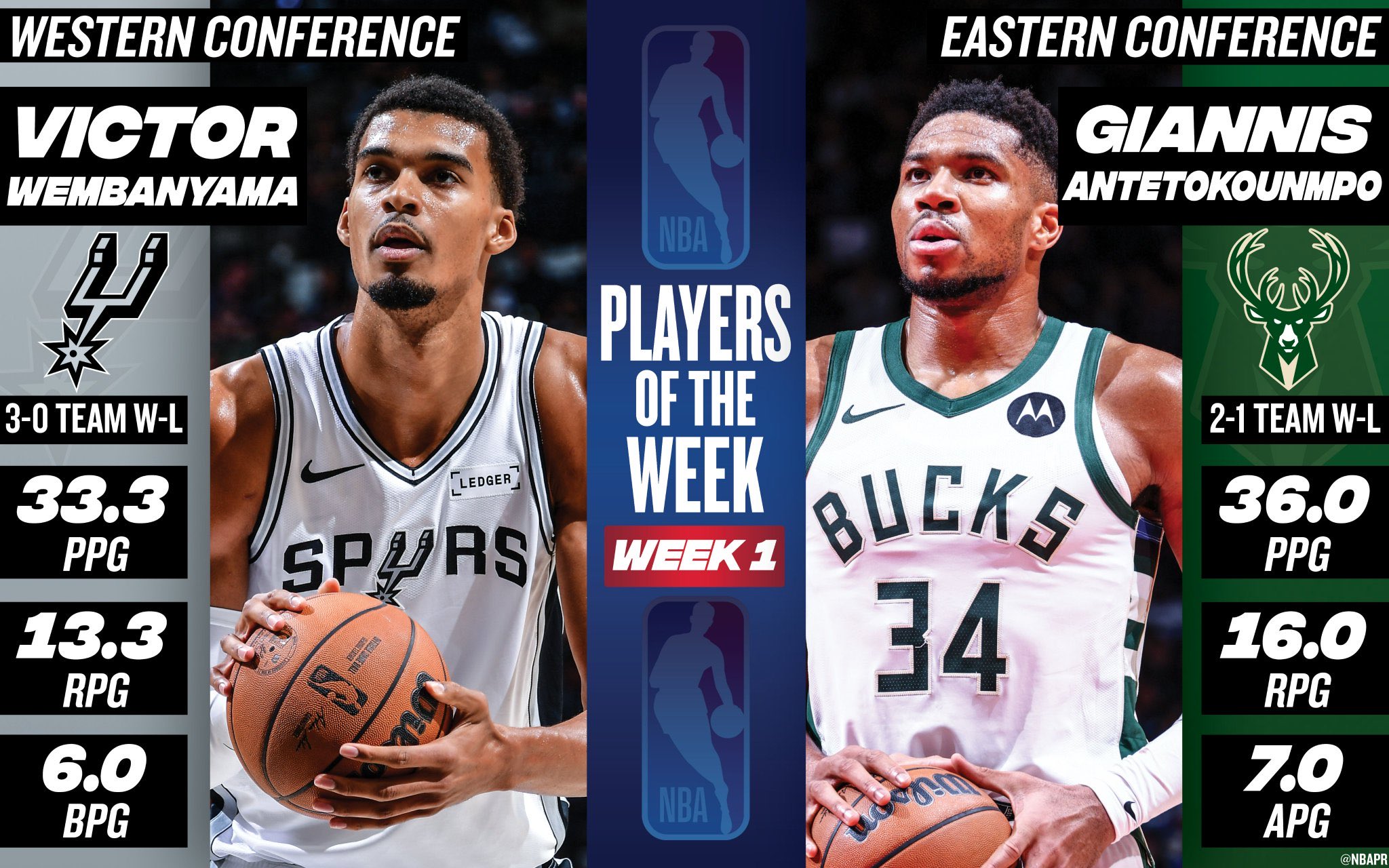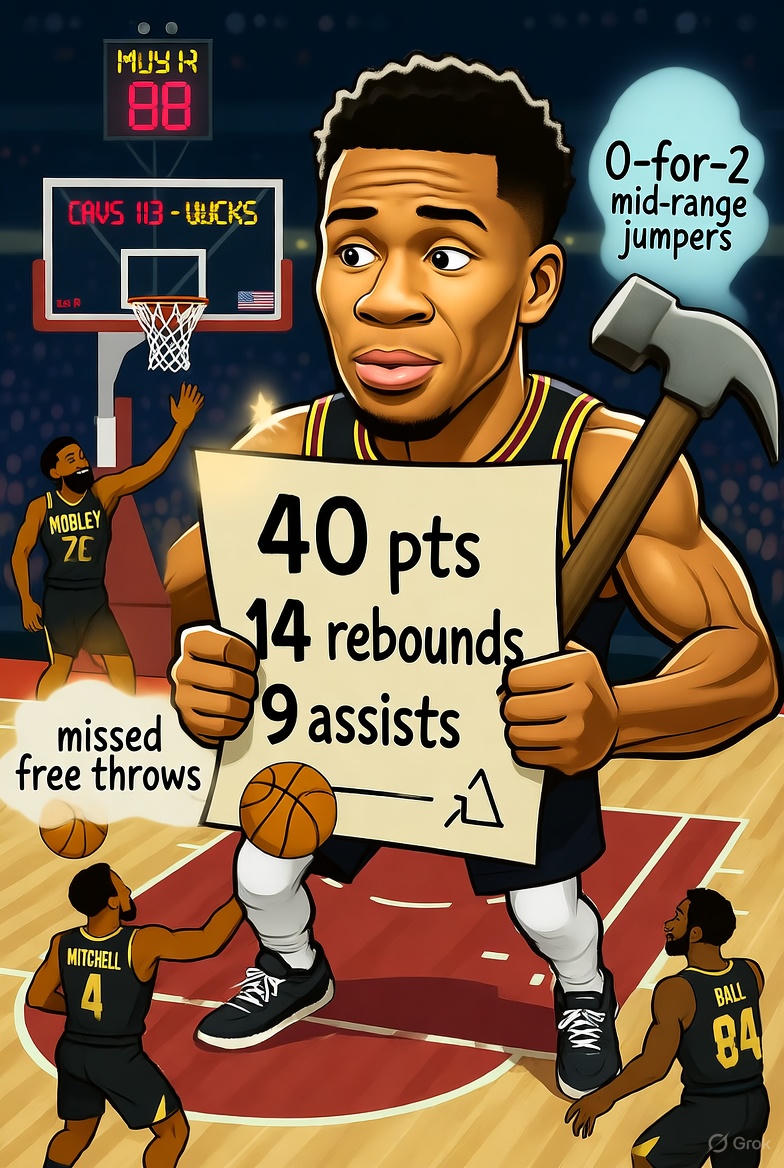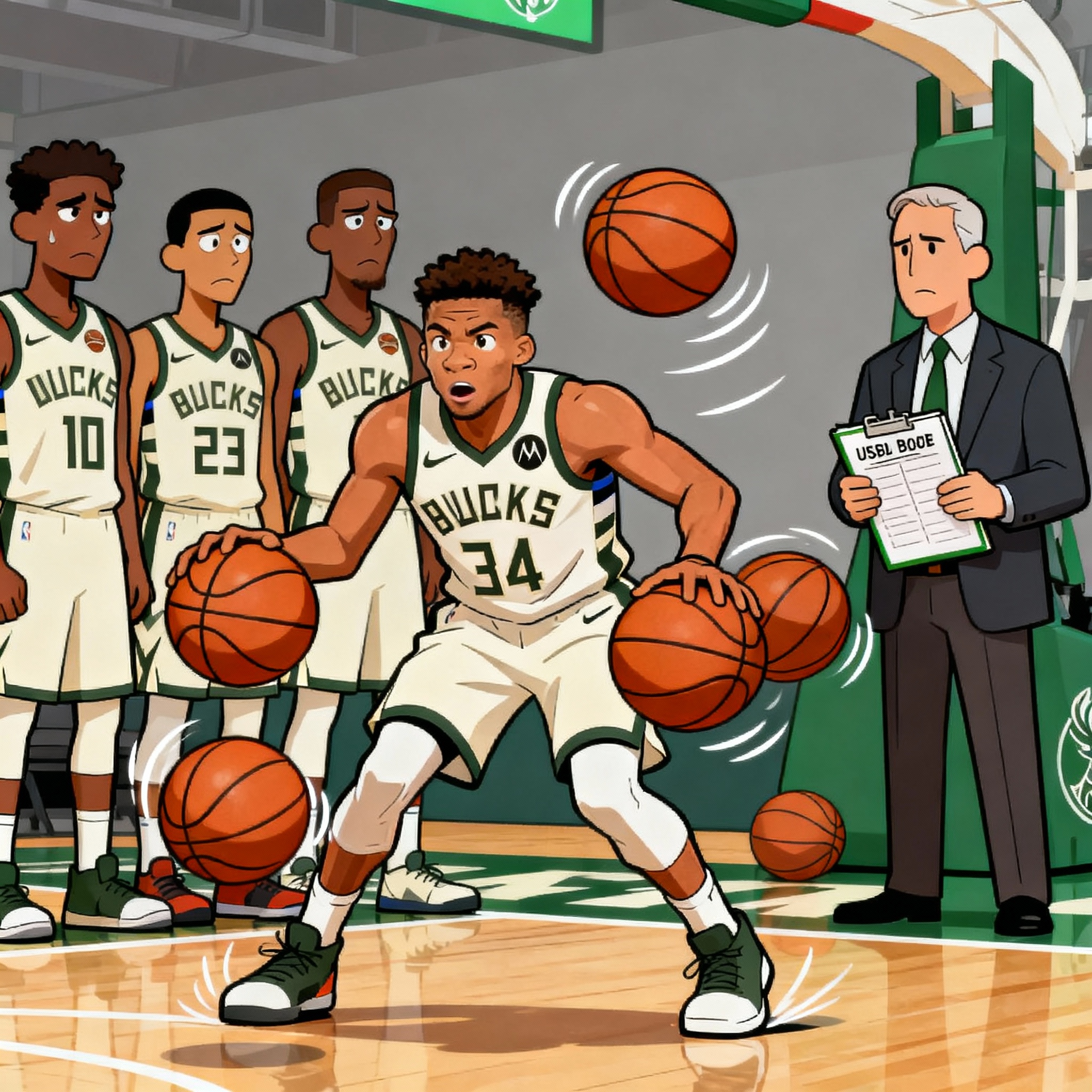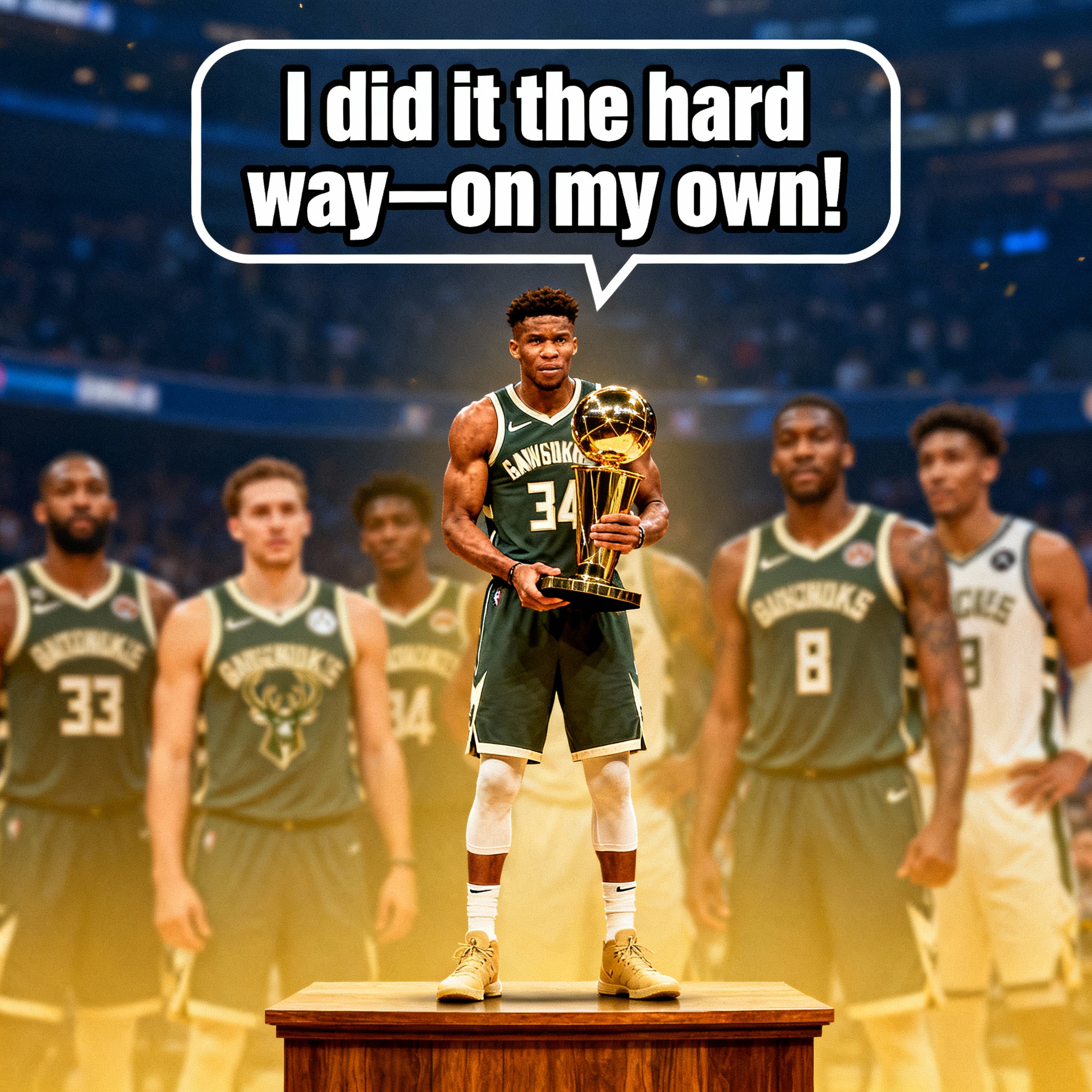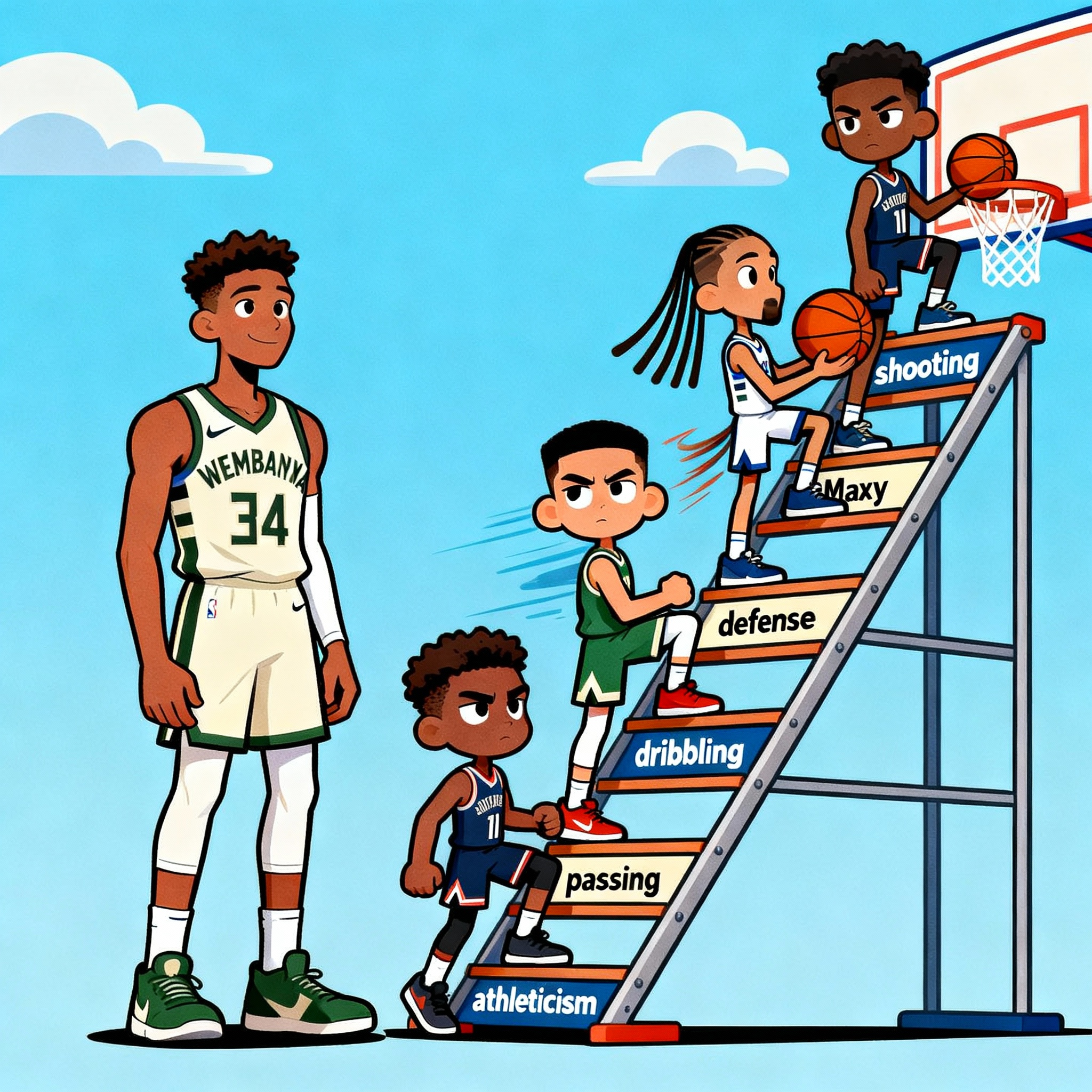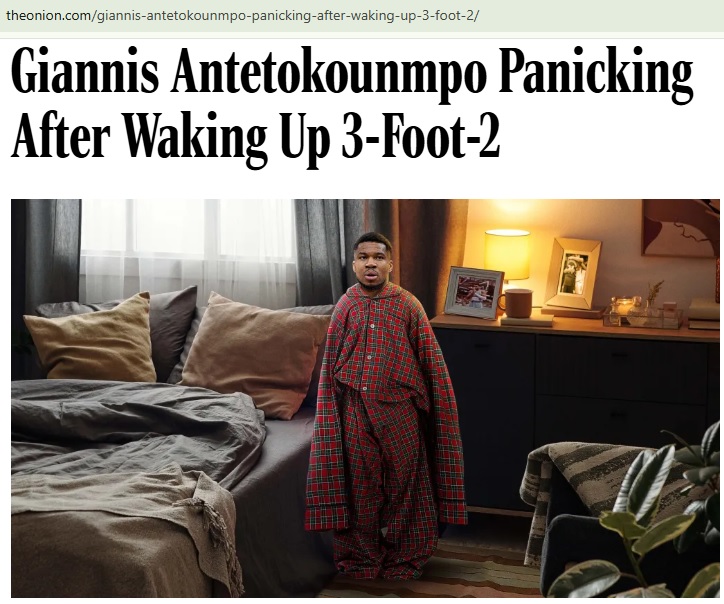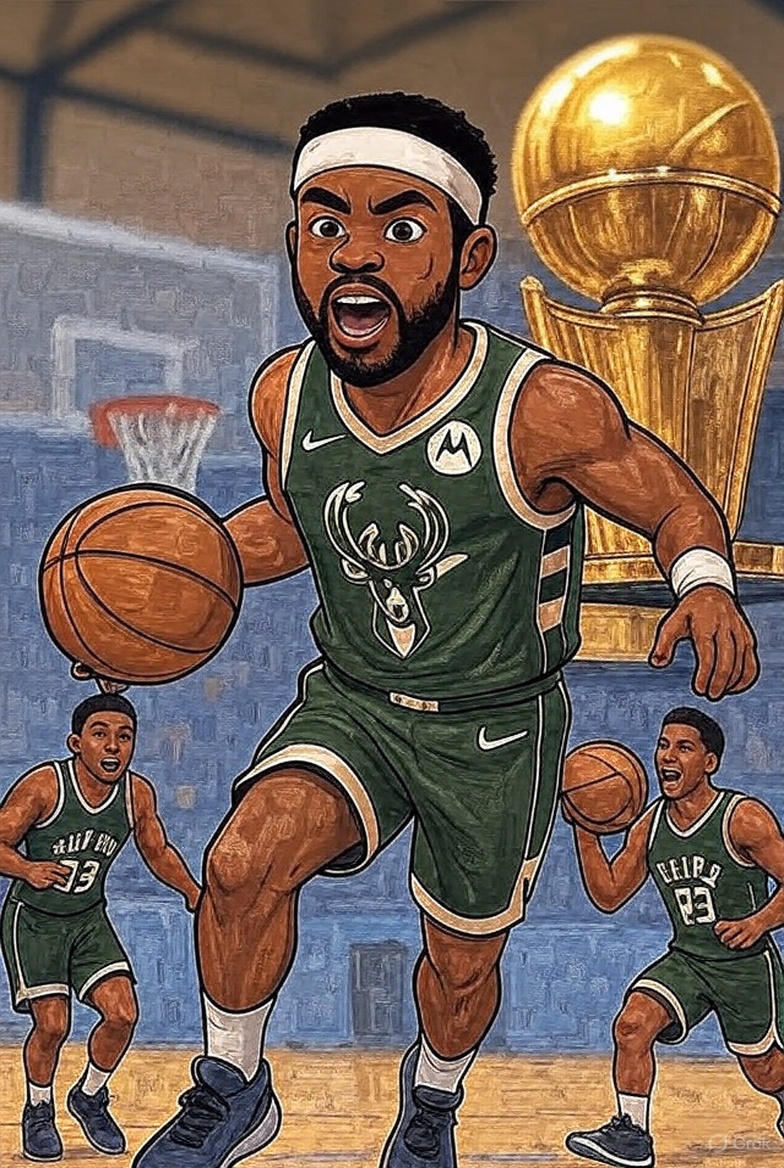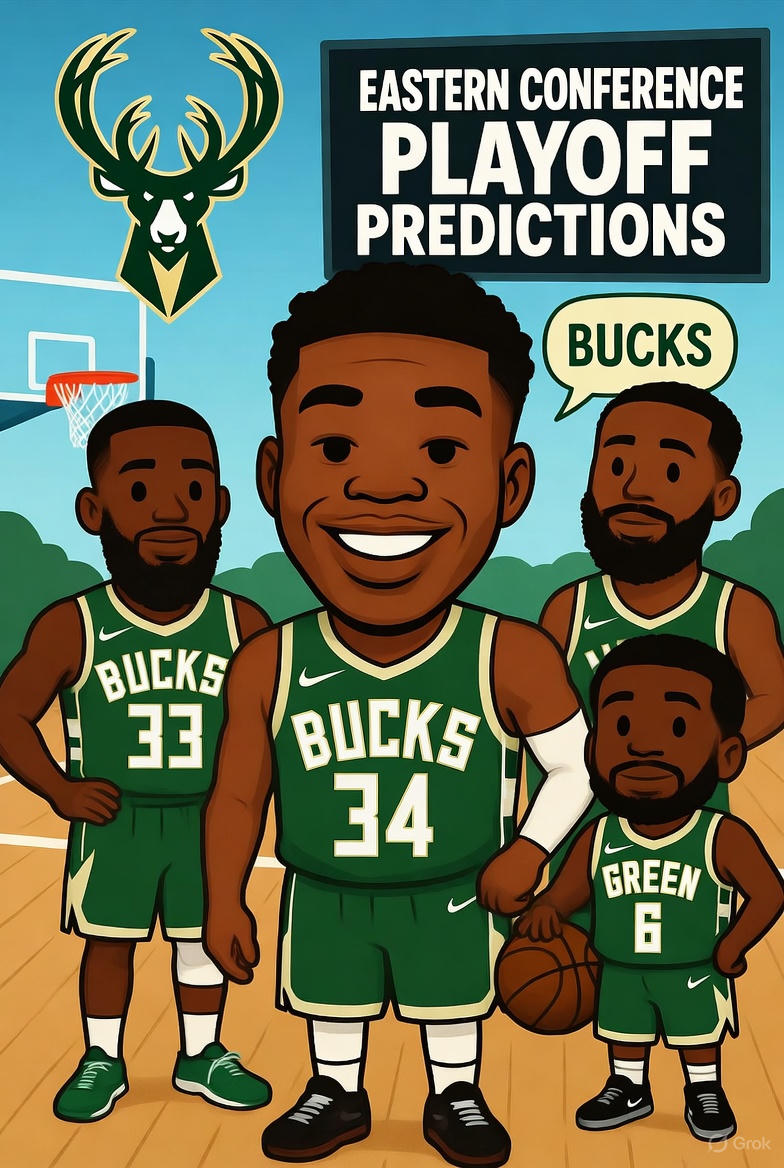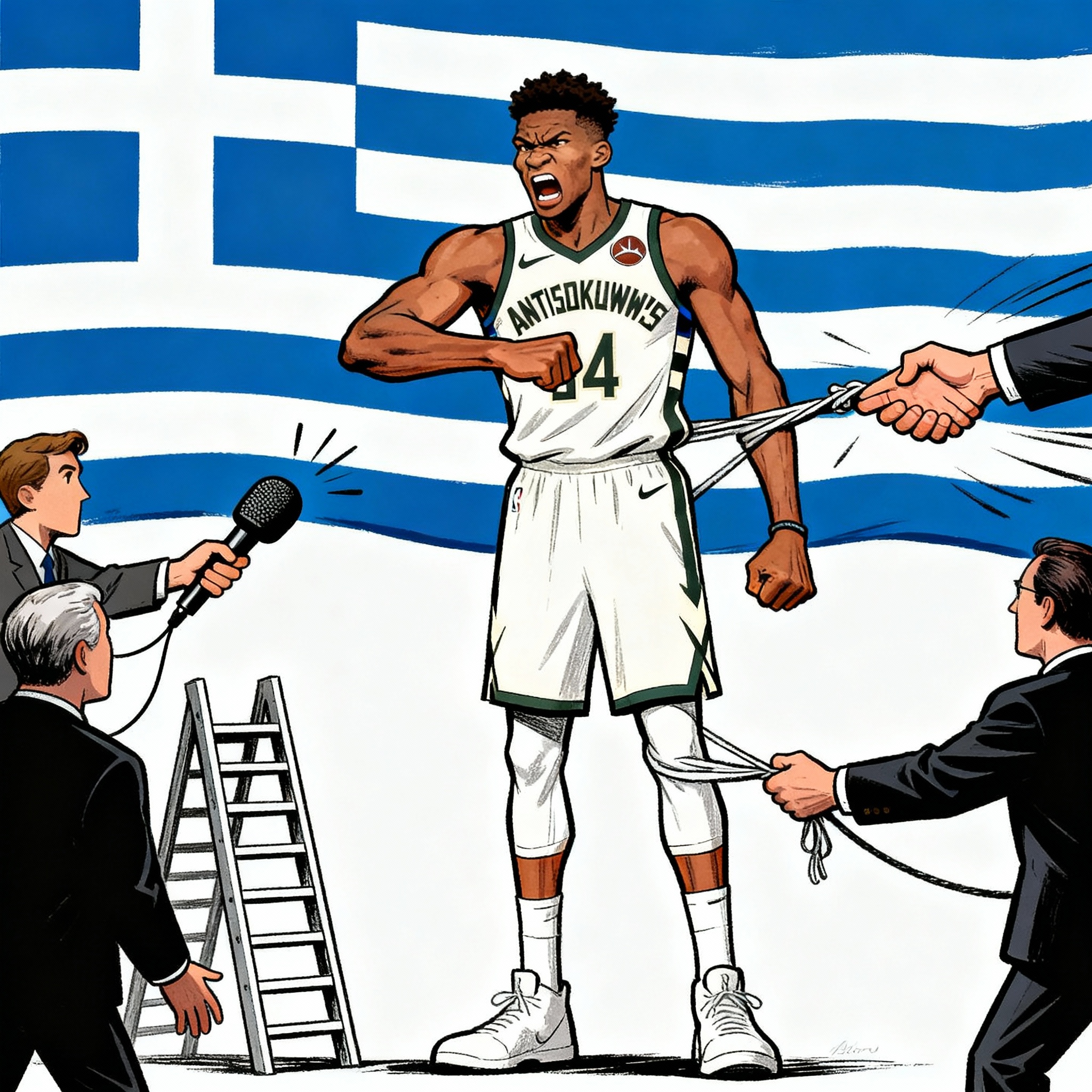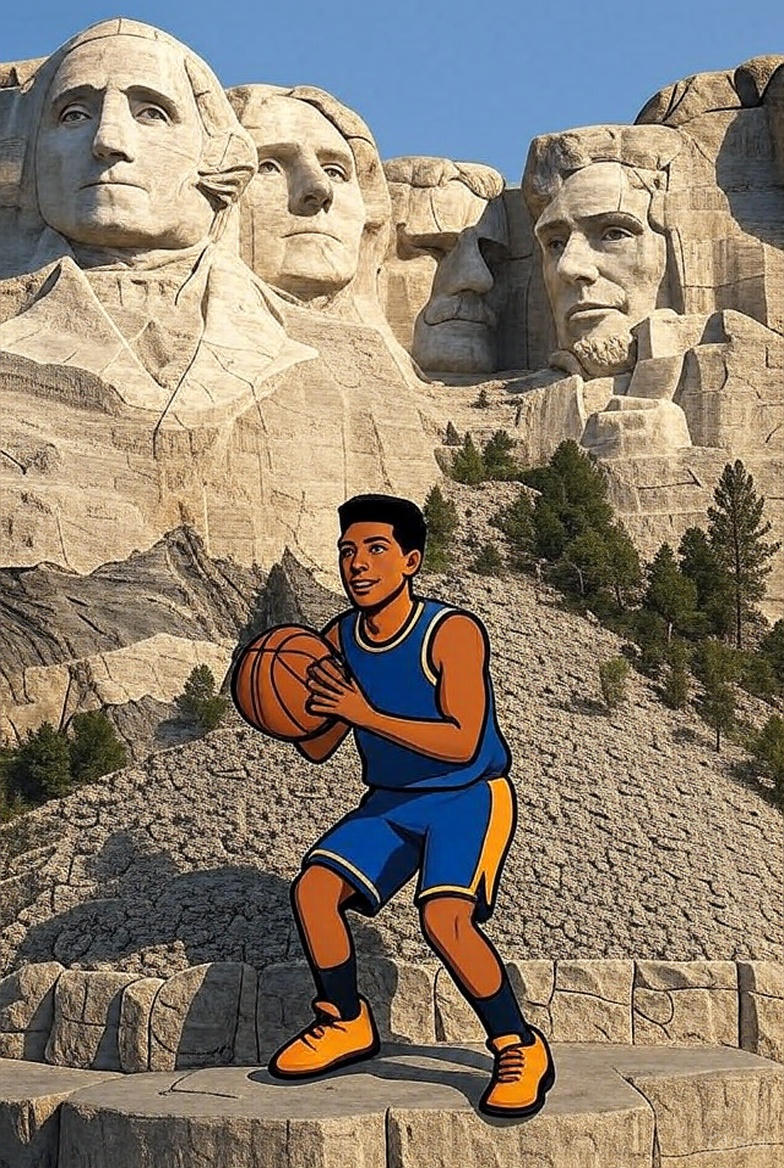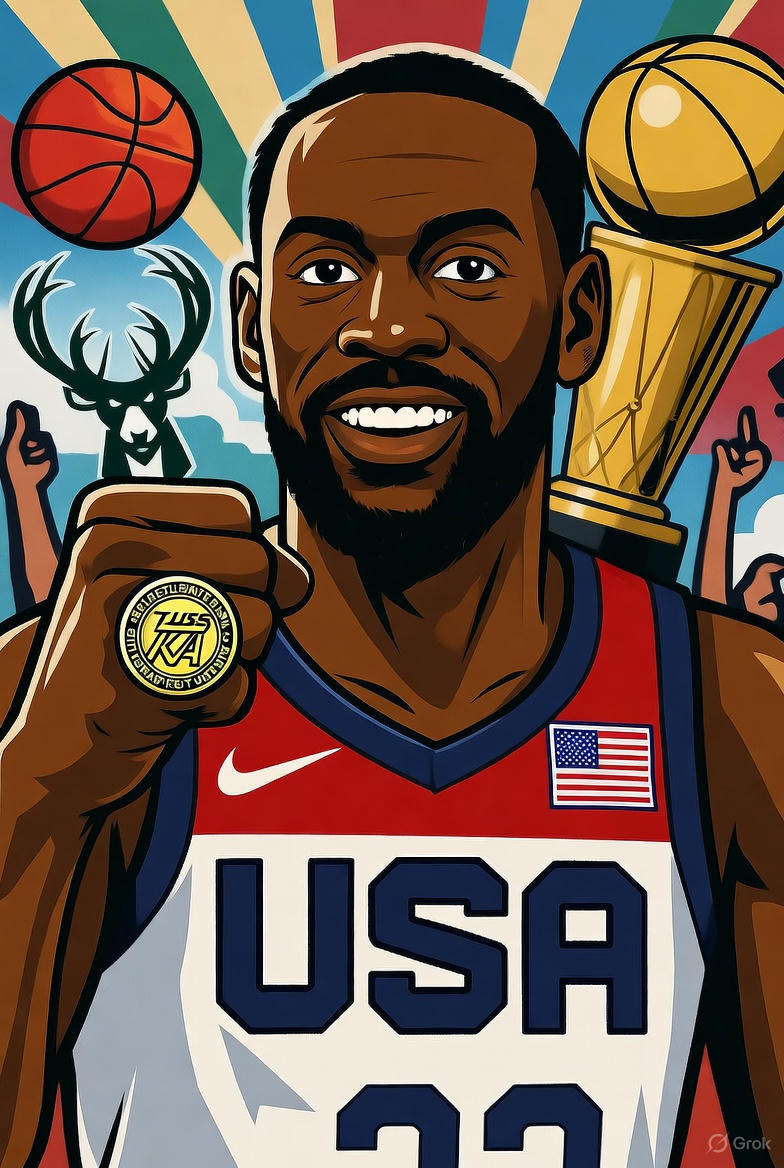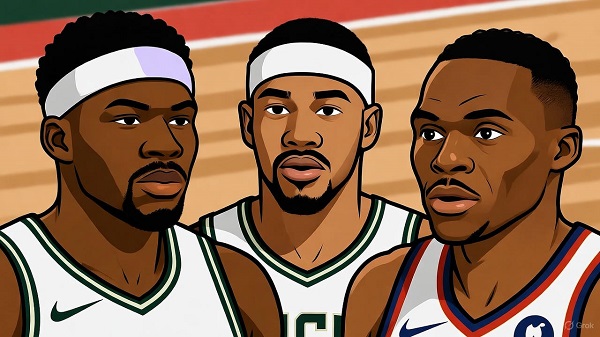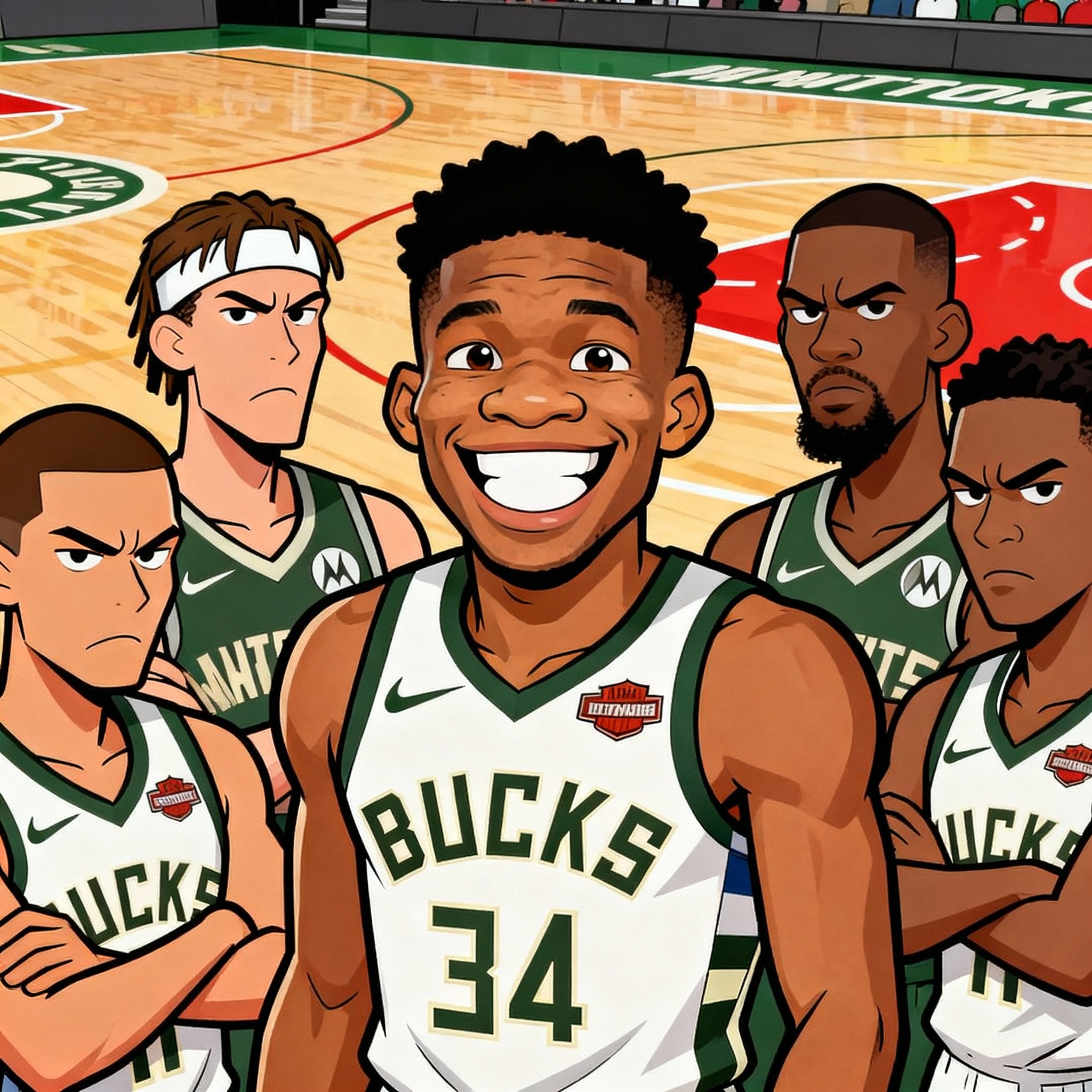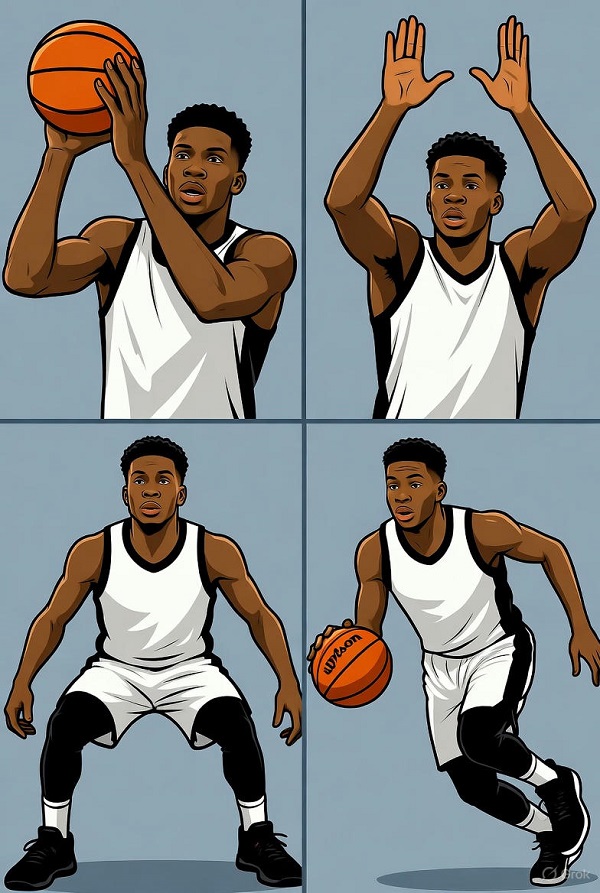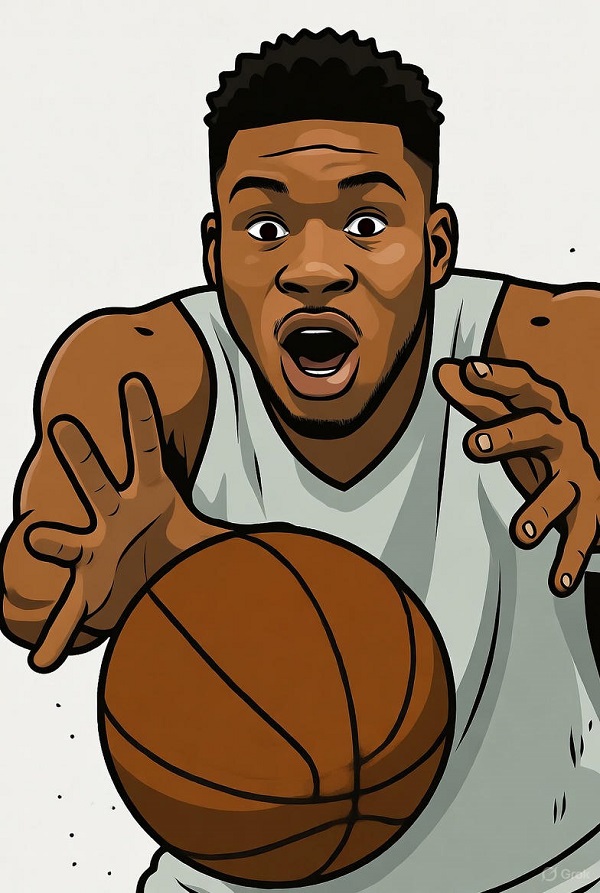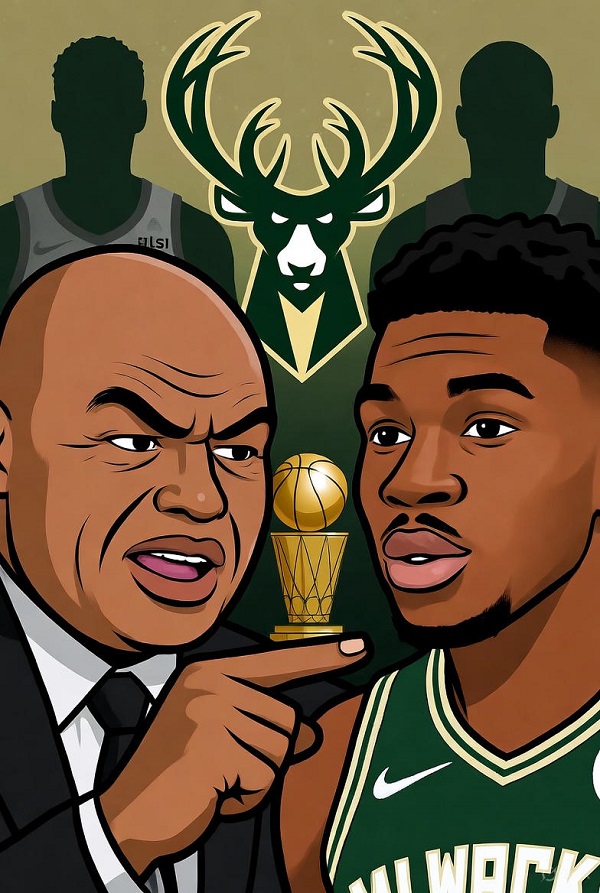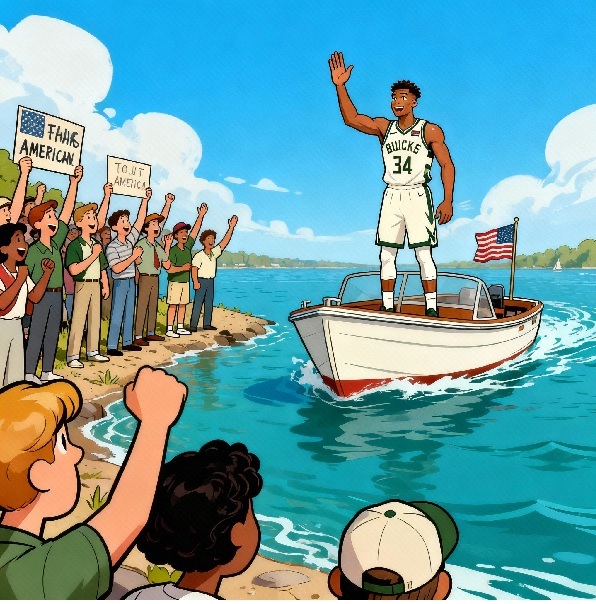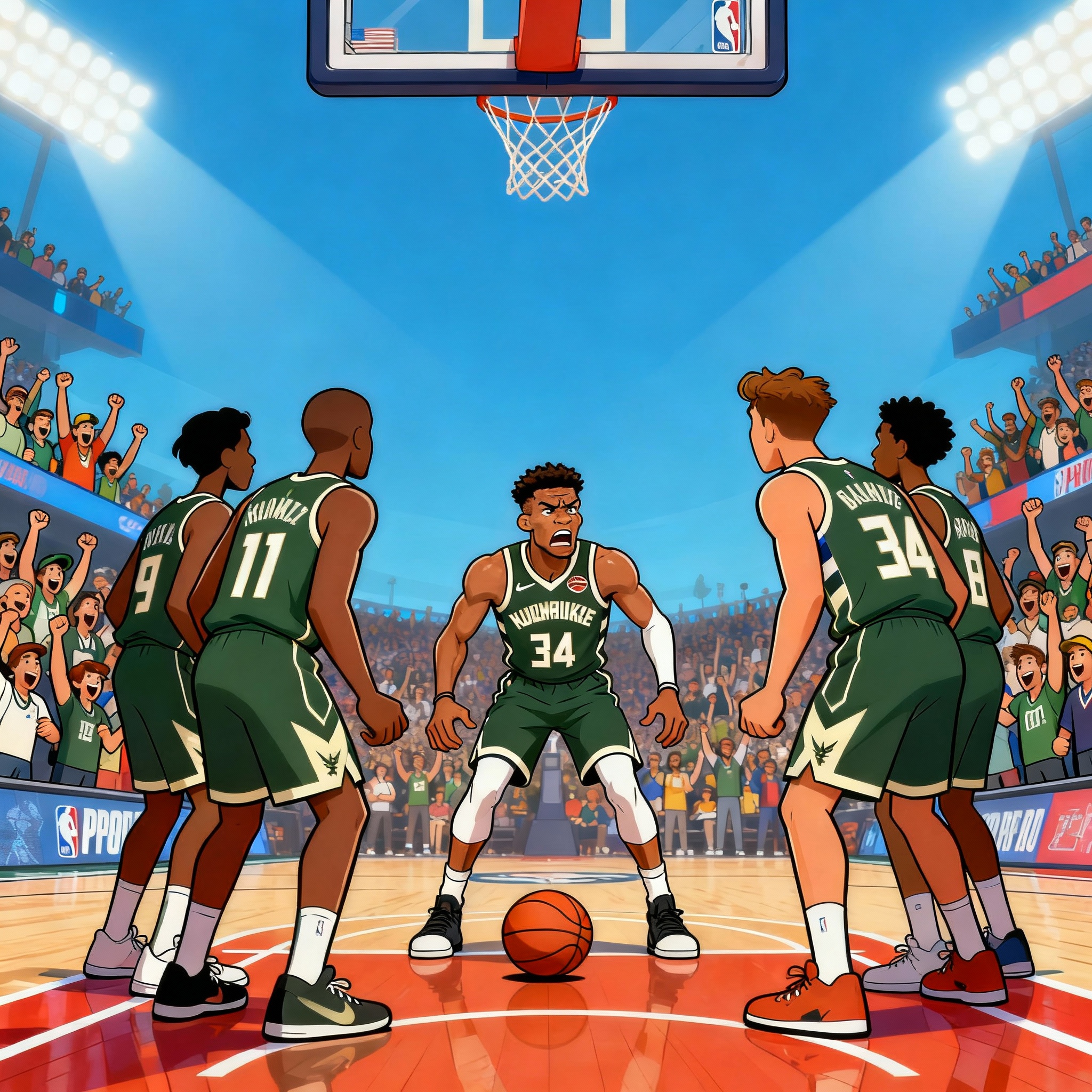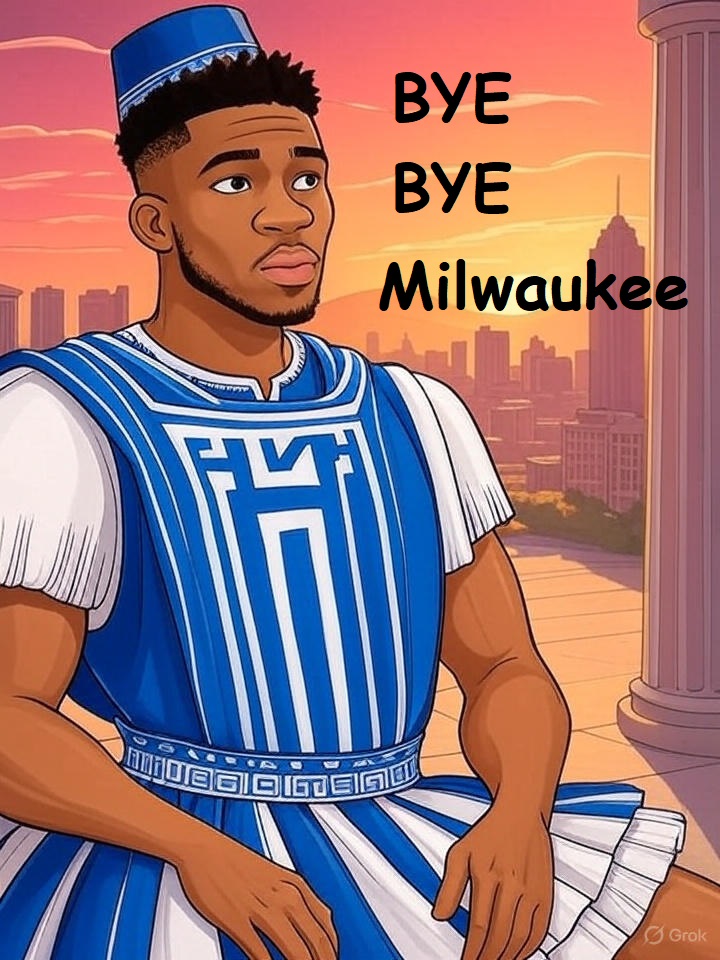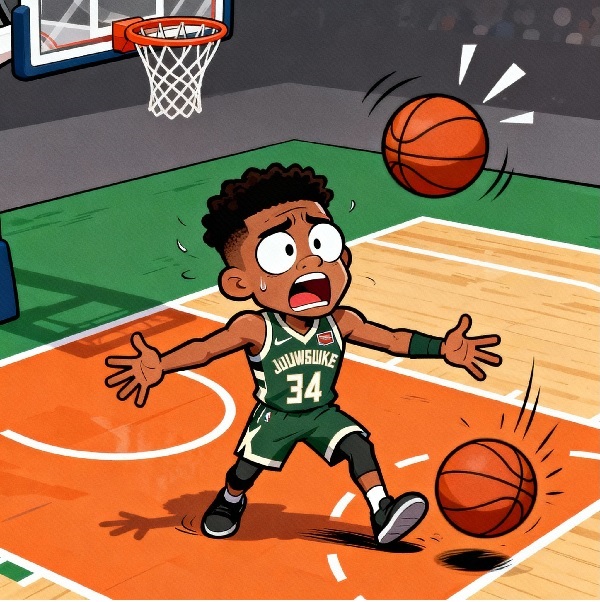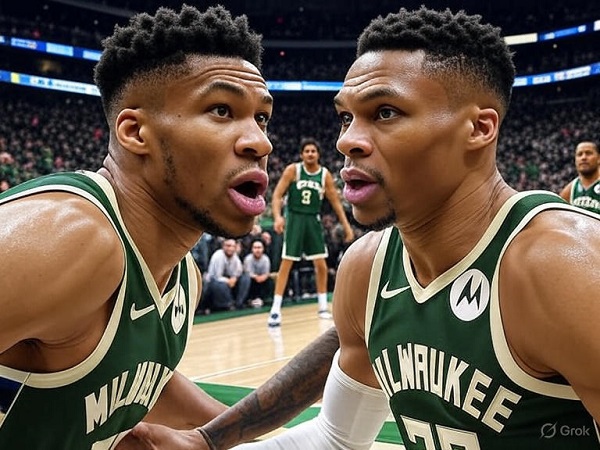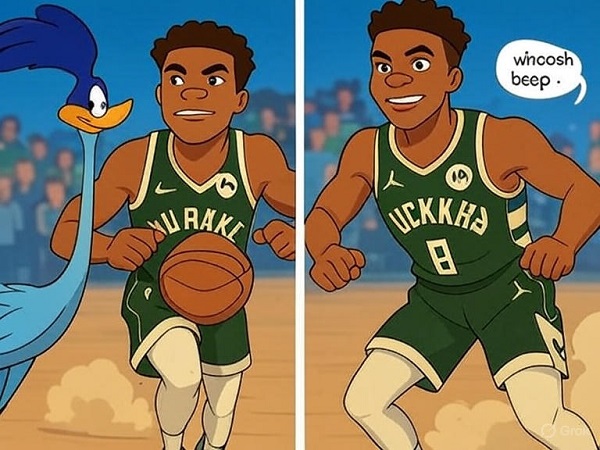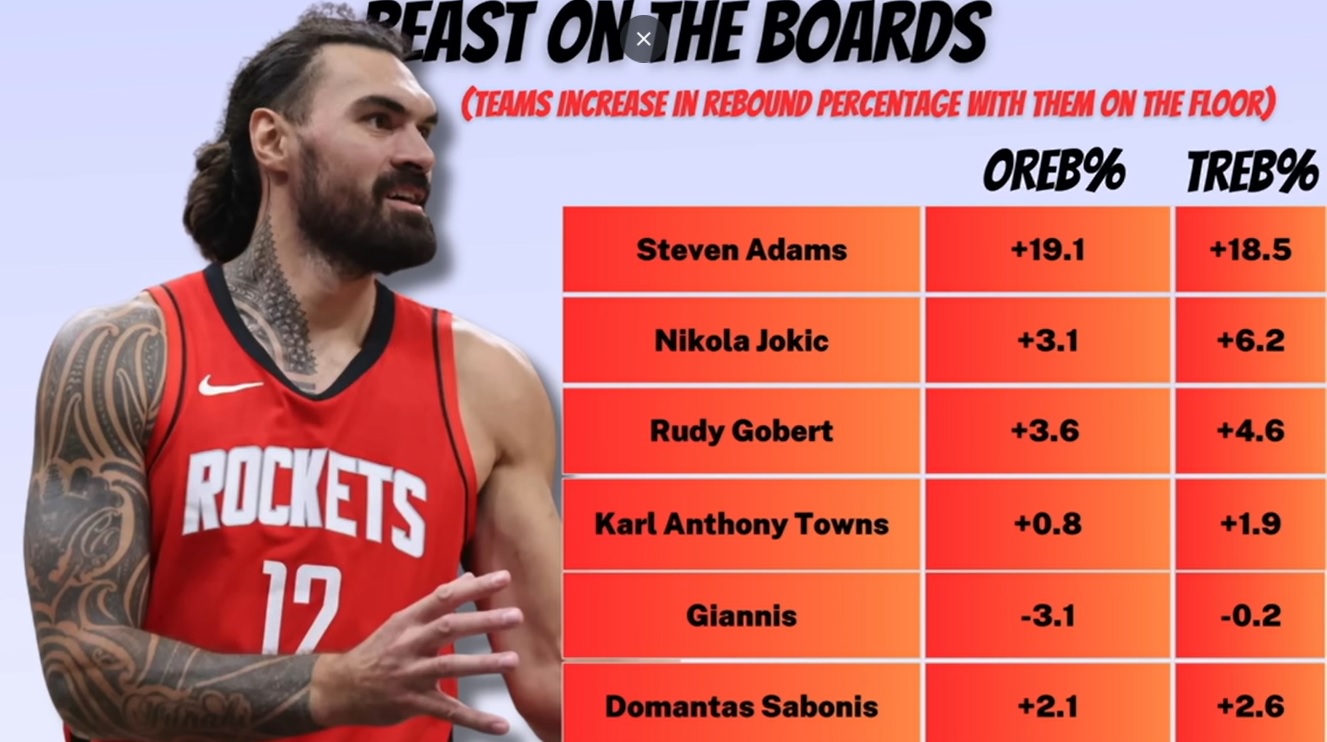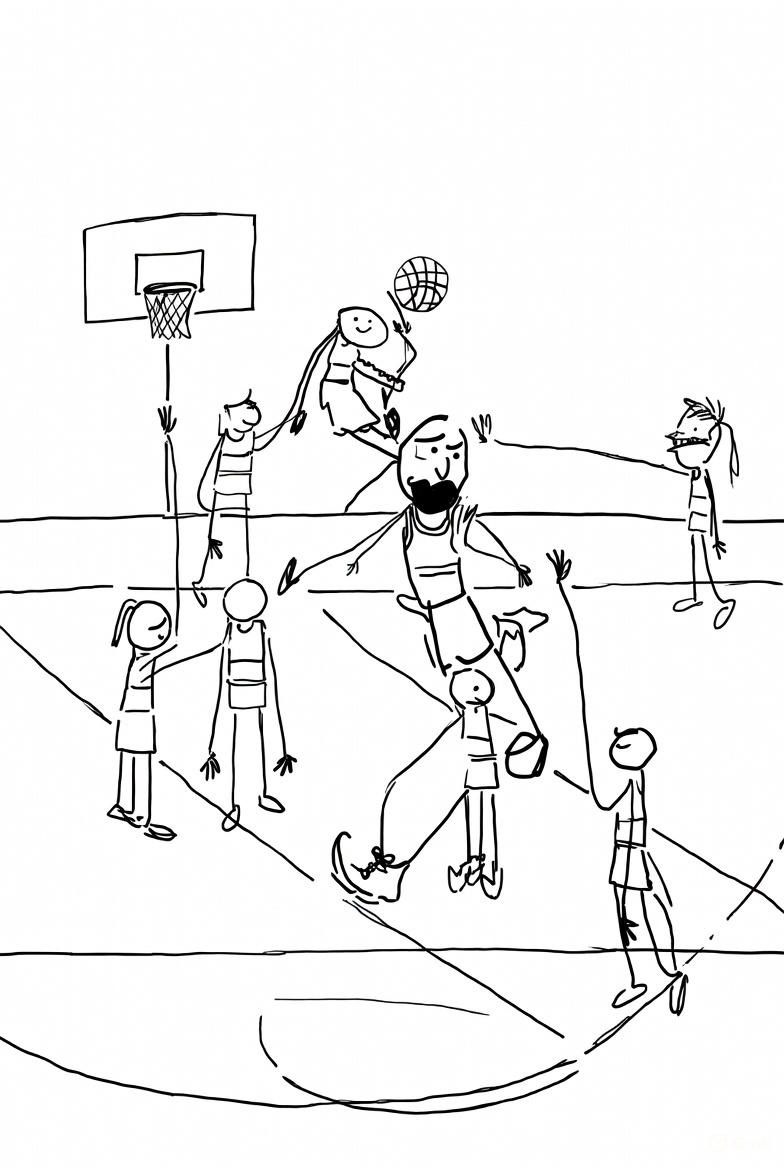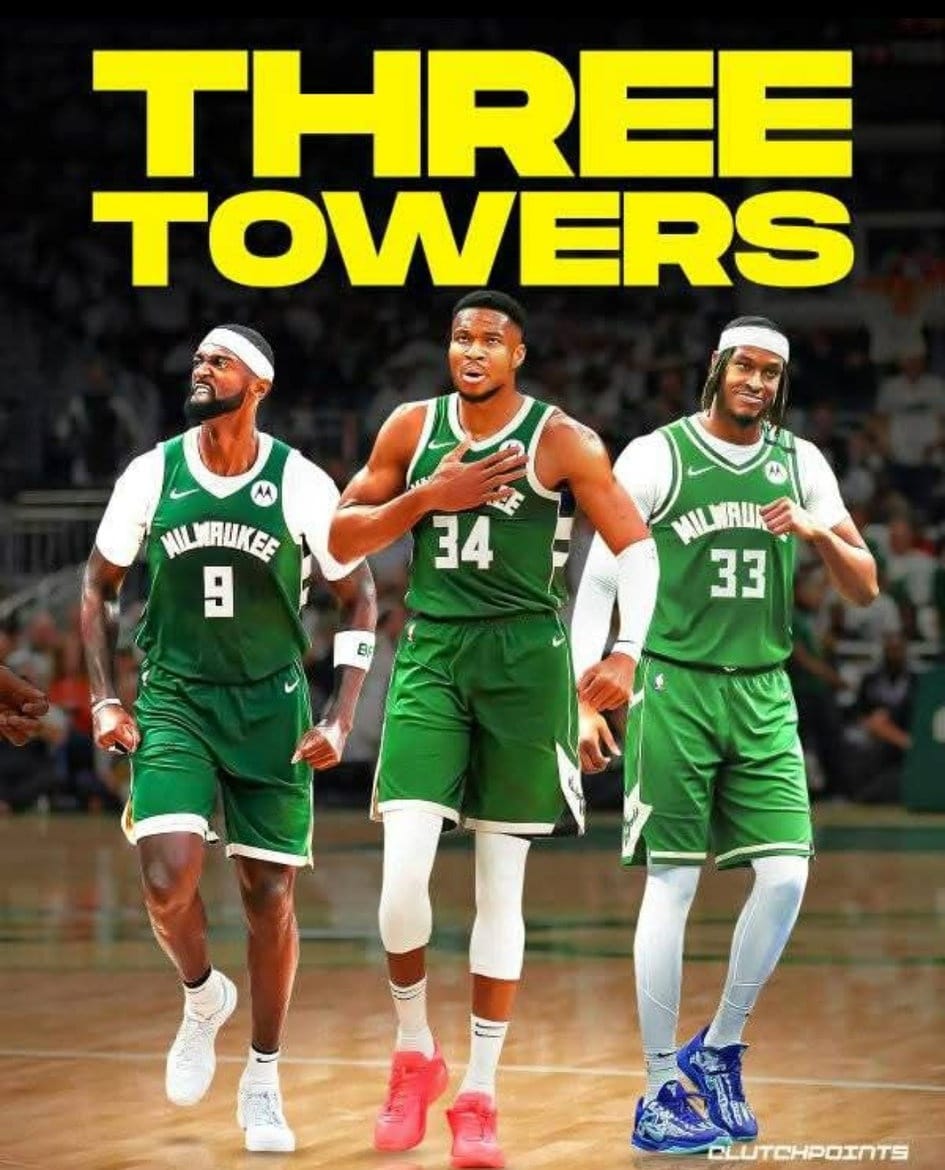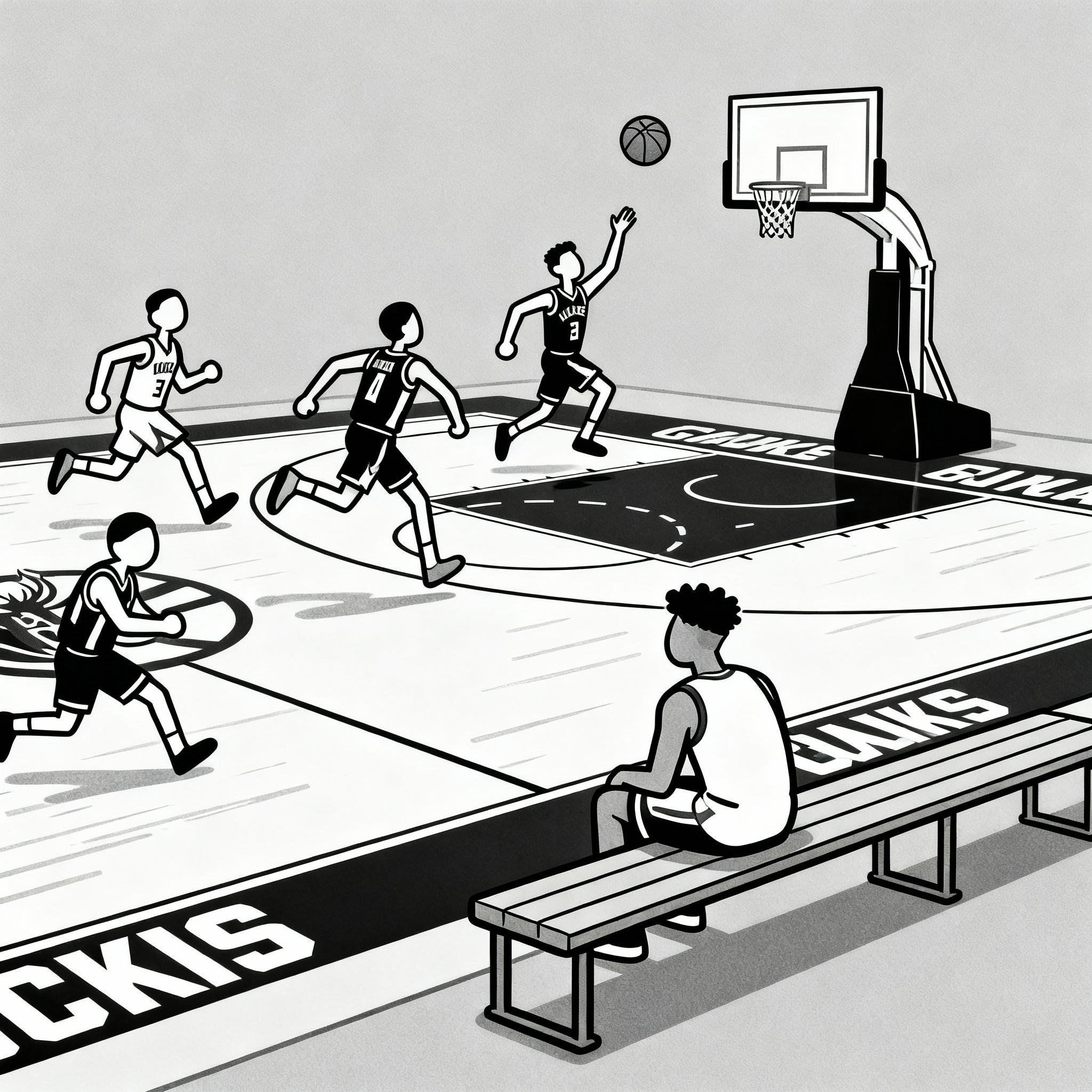If you’ve been scrolling through NBA offseason chatter, you’ve probably seen the glowing takes on the Milwaukee Bucks’ revamped frontcourt. With Giannis Antetokounmpo anchoring the middle, the addition of Myles Turner for elite rim protection, and Bobby Portis providing that spark-plug energy, some pundits are calling it a “wall of bigs” that could reshape the Eastern Conference. Doc Rivers now has a trio of towers that, in theory, dominate both ends of the floor. Portis himself hyped it up: “We can grow together. We can get better together. You can’t really find three better bigs together on any other team.” It’s a seductive narrative—the Bucks rising back to championship glory with sheer size and athleticism.
But hold up. As much as I love a good underdog story (or in this case, a powerhouse resurgence), this view strikes me as overly optimistic. It’s the kind of hot take that ignores the gritty realities of NBA basketball: chemistry, spacing, match ups, and the unforgiving nature of playoff hoops.
The Spacing Nightmare: When Too Many Bigs Clog the Paint
At the heart of the optimism is the idea that Giannis, Turner, and Portis form a versatile, energy-packed unit. Giannis, the two-time MVP and perennial All-NBA force, is the engine—driving, dunking, and defending like a freight train. Turner brings modern big-man skills: stretch-five potential with his three-point shooting (career 35% from deep) and top-tier shot-blocking (he’s led the league in blocks multiple times). Portis? He’s the ultimate sixth man, a fearless rebounder and scorer off the bench who averaged 13.8 points and 7.4 rebounds last season while shooting 40% from three.
Sounds perfect, right? Wrong. The real issue is fit. All three players operate primarily in the paint or as rollers in pick-and-rolls. Giannis thrives on drives to the rim, where he draws fouls and collapses defences but he can’t screen, let’s face it. Turner, despite his shooting, is best as a drop-coverage centre who protects the rim without much mobility to switch onto guards. Portis is a bulldog inside, excelling in hustle plays but lacking the foot speed for perimeter defence. When you stack them together, you’re essentially turning the paint into a traffic jam.
Imagine a possession: Giannis posts up, Turner sets a screen and rolls, and Portis crashes the boards. Defenses like the Boston Celtics or Philadelphia 76ers—teams loaded with switchable wings—will simply pack the lane and dare the Bucks to shoot from outside. Milwaukee’s offense already ranked mid-tier in three-point attempts last season (around 35 per game), and without reliable spacing from this frontcourt trio, Giannis’s efficiency could dip. He already shot his worse season ever for 3pt% last season. Hell worse in NBA history almost! Turner’s three-point volume is solid (about 3-4 attempts per game), but he’s not a volume bomber like Karl-Anthony Towns. Portis hits spot-up threes, but his attempts are sporadic and his percentages can be streaky.
In the playoffs, where spacing is king, this could be fatal. Remember how the Bucks struggled against the Heat in 2023? Jimmy Butler feasted by exploiting poor floor balance. A “wall of bigs” might sound imposing, but without perimeter threats to pull defenders away, it’s more like a sitting duck.
Defensive Strengths… and Glaring Weaknesses
On paper, this trio screams defensive dominance. Giannis is a Defensive Player of the Year candidate with his length and instincts. Turner is a perennial blocks leader (1.5+ per game career average), providing the anchor Milwaukee lacked after trading away Jrue Holiday’s versatility. Portis adds rebounding grit, helping control the glass (the Bucks were top-10 in defensive rebounding last year).
But let’s pump the brakes. While they might stifle slashers and protect the rim, modern NBA offenses exploit bigs who can’t switch. Turner is a classic drop big—great at erasing shots at the hoop but vulnerable to pick-and-rolls where guards like Jalen Brunson or Tyrese Maxey can pull him out of position. Giannis can switch 1-4, but asking him to guard elite wings every night wears him down. Portis? He’s a liability on the perimeter; opponents targeted him in switches last season, and his 6’10” frame doesn’t translate to elite foot speed against quicker forwards.
The East is a minefield of versatile scorers: Jayson Tatum, Joel Embiid, Donovan Mitchell, and even Paolo Banchero. In a seven-game series, teams will hunt mismatches relentlessly. Doc Rivers’ defensive schemes have historically relied on communication and help defense, but integrating three bigs with overlapping roles could lead to breakdowns. And Giannis is not know for high IQ plays, adaptability or even managing to understand complex systems. It’s not just about blocks—it’s about containment. This “wall” might hold against lesser teams but crumble under sustained pressure from playoff juggernauts. Which is a very common Bucks’ theme. Everyone gets excited in the regular season but then when it matters? Zilch!
The Perimeter Creation Void: No Shooting, No Problem? Think Again
The optimism assumes Giannis can carry the offense as the “engine,” with Turner and Portis providing secondary scoring. But here’s the rub: Milwaukee lacks true perimeter creation. Without a secondary ball-handler or elite spot-up shooters in the frontcourt, the Bucks become predictable. Giannis’s heliocentric style works when there’s spacing, but against teams that double-team him (as the Celtics did effectively in recent years), who kicks out to? Turner’s shooting helps, but he’s not a playmaker (career 0.5 assists per game). Portis is more of a finisher than a facilitator. This trio doesn’t address Milwaukee’s need for off-ball movement or multiple creators—issues that plagued them in the playoffs.
Compare other front courts that stretch the floor, switch seamlessly, and have multiple threats. The Bucks’ setup feels like a throwback to the 90s bully-ball era, which the three-point revolution has largely rendered obsolete.
Injury Risks: A House of Cards Built on Health
No discussion of this frontcourt is complete without addressing durability. Giannis is a tank, playing 70+ games most seasons, but he’s had calf and hamstring scares that sidelined him at critical times. Turner? His injury history is a red flag—he missed 25 games last season with a stress reaction in his foot and has dealt with calf strains and ankle issues throughout his career. Portis is tougher, but at 29, he’s not immune to wear-and-tear from his high-energy style.
In a league where load management is king, relying on three bigs means depth is crucial. If Turner goes down (a real possibility given his track record), the Bucks fall back on Portis and maybe a less proven option like Sandro Mamukelashvili. Suddenly, that “unmatched trio” becomes a duo, and the wall crumbles. The optimism glosses over this fragility—health isn’t guaranteed, especially in a grind-it-out Eastern Conference. Especially the way Giannis plays. So far he has counted on teams not bothering to defend him all on in the regular season. But there are young teams and players who saw what happened in Greece vs Turkey and might want to take on the challenge. It’s not that hard. If Dillon Brooks can shut Giannis down, hey, many can.
Doc Rivers’ Integration Challenge: Chemistry Isn’t Instant
Doc Rivers brings championship pedigree (2008 with the Celtics), but his Bucks tenure has been rocky. Last season, Milwaukee underperformed expectations, exiting in the first round despite superstar talent. Integrating Turner—a new acquisition—alongside Giannis and Portis requires time. Rivers’ systems emphasize veteran leadership, but bigs need reps to gel on rotations, pick-and-roll timing, and defensive coverages.
Portis’s quote about “growing together” is feel-good, but NBA reality is harsher. Chemistry takes preseason games, early-season tweaks, and avoiding early slumps. Rivers has a history of slow starts (e.g., with the Clippers), and if the frontcourt experiments flop, fan frustration could mount. This isn’t a plug-and-play unit; it’s a high-risk rebuild of the paint.
The Eastern Conference Gauntlet: No Room for Error
Finally, let’s zoom out. The East is stacked: Boston’s dynasty-level depth, Philly’s Embiid-led firepower, Cleveland’s young guns, New York’s grit, and Orlando’s athleticism. The Bucks’ bigs might bully some teams, but against elite defenses, they’ll struggle. The Celtics, for instance, ranked first in defensive rating last season and have wings who can body Giannis while shooters pull him away. Philly could match size with Embiid and Paul Reed, turning games into slugfests where Turner’s blocks are neutralized.
In simulations or advanced metrics (like those from Cleaning the Glass), heavy-big lineups often underperform in pace-and-space eras. The Bucks might win 50+ games, but a deep playoff run? That’s where optimism meets reality. Last season let’s not forget that the Bucks beat zero teams above 0,500 in the regular season even.
Tempered Expectations for the Bucks
One of the primary concerns with pairing Turner and Giannis is their overlapping preferences for operating near the basket, which could lead to congested spacing if not managed carefully. Giannis thrives on drives, post-ups, and transition attacks, averaging 30.4 points per game last season with a heavy emphasis on paint touches. Turner, while a capable stretch big (career 35% from three on about 3-4 attempts per game), isn’t a high-volume bomber like Kristaps Porziņģis or Karl-Anthony Towns, and his scoring often comes from pick-and-rolls or spot-ups rather than creating off the dribble. In Indiana, Turner’s teams weren’t dominant on the glass or in creating open looks, and analysts worry that without elite perimeter threats around them, defenses could sag off and pack the paint, limiting Giannis’s efficiency.
That said, Turner’s agility and shooting could mitigate this better than Brook Lopez did in recent years, allowing for more fluid movement offences like dribble hand-offs (DHOs) and short-roll decisions. Discussions online emphasise that Turner’s floor-spacing ability is a step up, potentially enabling three-guard lineups to pull defenders out. However, if Turner’s three-point volume doesn’t increase (he averaged just 3.5 attempts last season), the duo risks becoming predictable, especially in playoffs where teams like the Boston Celtics exploit poor spacing with switchable wings. Early posts from fans highlight the need for additional 3-and-D players to surround them, underscoring that their fit relies heavily on roster tweaks for optimal spacing. But this is just the common Bucks’ fans excuse isn’t it? “If only we had sharp shooters that never miss from the 3pt line…” Duh!
Secondary Scoring and Creation: Turner as a Limited Second Option
A glaring issue is Turner’s role as a potential second-leading scorer, especially after the Bucks traded Damian Lillard, leaving a void in perimeter creation and high-volume scoring. Turner’s career-high scoring is 18 points per game (from 2021-22), far below Lillard’s 25+ PPG output, and he’s more of a finisher than a self-creator, relying on screens and spot-ups rather than isolation plays. Analysts like those at The Athletic question whether Turner can handle the Bucks’ expectations to average more while maintaining two-way impact, noting that asking him to fill Lillard’s shoes could be overly demanding. Giannis has expressed excitement about Turner’s ability to shoot and drive, but reports suggest he’s internally questioning if Turner is a true championship-caliber second option.
This lack of secondary creation exacerbates the Bucks’ offensive predictability. Without a reliable playmaker to alleviate pressure on Giannis, the frontcourt duo might struggle in half-court sets against elite defenses. Pundits like Bill Simmons have called the signing “desperate,” arguing that paying Turner $27 million annually highlights deeper roster flaws rather than solving them. While the Giannis-Turner pick-and-roll has “scary” potential, the team’s offensive ceiling depends on a committee approach, which could lead to inconsistent production if Turner under performs.
Defensive Schemes: Strengths in Rim Protection but Vulnerabilities in Versatility
Defensively, the pairing shines in theory: Giannis is arguably the best help defender in NBA history, and Turner has led the league in blocks multiple times, providing elite rim protection. Turner’s mobility is an upgrade over Lopez, allowing for better switching and perimeter pressure, potentially enabling aggressive schemes with Giannis roaming. However, Turner’s drop-coverage style exposes weaknesses in isolation match ups against quicker forwards or guards, where his foot speed can be exploited. Analysts point out that Turner isn’t a direct Lopez replacement on defence, and without addressing the Bucks’ past perimeter vulnerabilities, the duo alone won’t fix team-wide issues. Giannis is no longer the best help defender, he seems more concerned with wondering aimlessly about looking for a highlight block.
Coaching and Team Dynamics: Integration Under Doc Rivers and Roster Depth
Head coach Doc Rivers’ system is a potential mismatch, with critics on Reddit warning that his outdated schemes could hinder Turner’s impact, limiting the duo to regular-season success rather than playoff dominance. The Bucks’ front office views Turner as an “evolution” of Lopez, but integrating him requires chemistry-building, especially with a younger roster post-Lillard. Depth remains a red flag; as ClutchPoints notes, the Bucks lack enough support around Giannis, meaning Turner must be exceptional, not average, to open the championship window—potentially necessitating midseason trades.
Giannis’s media day comments didn’t fully ease future concerns, hinting at underlying doubts about the roster’s competitiveness. While Turner is excited about the fit and their early communication, the pressure on this duo to gel quickly is immense, given Milwaukee’s recent first-round exits.
Overall Assessment: High Upside with Significant Risks
The Turner-Giannis pairing offers tantalising potential—a mobile, two-way frontcourt that could dominate the paint and stretch defences. Yet, fit issues in spacing, creation, defensive versatility, and team integration make it a gamble. For the Bucks to succeed, Turner must elevate his game, the roster needs bolstering, and Rivers must adapt. Without these, this “wall of bigs” might crumble under playoff scrutiny, as sceptics like Simmons suggest. As training camp approaches, watch for preseason chemistry; it could determine if this duo propels Milwaukee back to contention or exposes deeper flaws.Look, I get the excitement—the Bucks have talent for days, and if everything clicks, this front court could be special. Giannis is a generational force, and adding Turner’s defence addresses a key weakness. But labelling it an “unmatched trio” that will “reshape the East” ignores the NBA’s complexities. Spacing issues, defensive mismatches, creation gaps, injury woes, integration hurdles, and stiff competition make this more gamble than guarantee.
Giannis’ Inherent Limitations: Challenges for Any Teammate
Giannis Antetokounmpo, despite being one of the most dominant names in the NBA, possesses limitations that inherently make it challenging for any teammate to thrive alongside him, including someone like Turner. His subpar outside shooting—career 28.9% from three on low volume—forces defences to sag off him, clogging driving lanes and reducing spacing for others, which particularly hampers bigs who also prefer interior play and requires a supporting cast heavy on elite shooters to open up the floor. Furthermore, Giannis’s heliocentric playing style, where he handles the ball extensively (usage rate often above 30%), demands complementary pieces who excel in spot-up shooting and off-ball movement, limiting the effectiveness of players without strong perimeter skills and reducing opportunities for teammates to cut or create independently. His inconsistent free-throw shooting (around 70% career) invites “Hack-a-Giannis” strategies in crunch time, disrupting team rhythm and putting undue pressure on others to compensate during high-stakes moments. These factors create a roster-building puzzle, as analyses note how his approach maximises his own impact but can stifle team dynamics, making it tough for non-specialised players to fit seamlessly and often leading to frustrations in playoff scenarios where adaptability is key. You can’t blame it all on Doc Rivers!
As fans, we love bold predictions, but smart analysis demands balance. The Bucks could contend, but they’re not locks for the top. Keep an eye on training camp reports and early games— that’s where the real story unfolds. Check them when the going gets tough, in clutch, against better teams.
